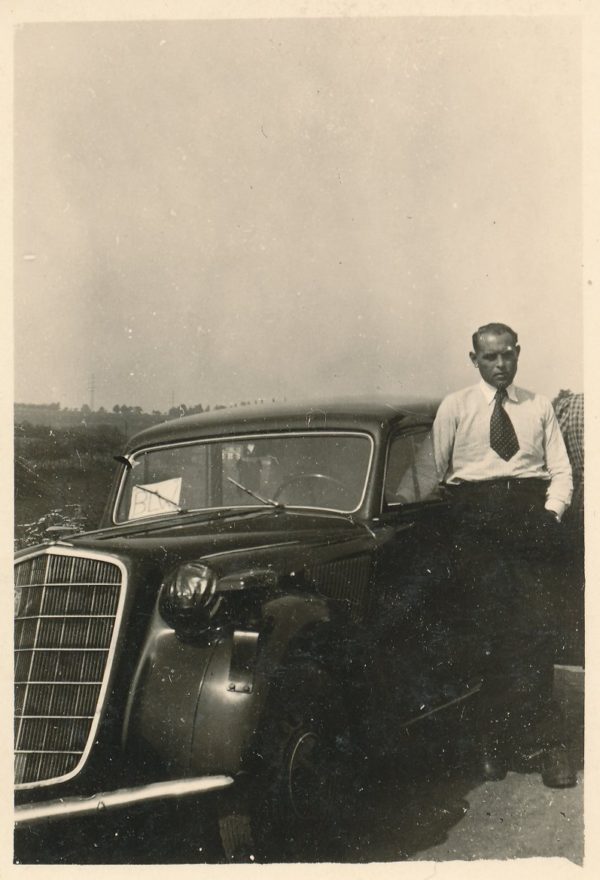
At first glance, this Opel Olympia may appear very little out of the ordinary. True, the blackout cover over the headlamp makes it clear that the picture has been taken during World War II – but there are two further clues that tell us more of what is going on.
Firstly, the curious additional piece of equipment firmly attached to the front wing is a Tarnscheinwerfer – ‘Camouflage headlamp’ – a uniquely German solution to providing limited night vision for a driver, whilst making it difficult for the vehicle to be detected by enemy observers on the ground or in the air. These headlamps were compulsory fittings during World War II on any German military vehicle, or any civilian vehicle with authorisation to travel.
After unsuccessful trials with slit covers for a vehicle’s own headlamps, the German Army motorisation research department developed this lamp with Nova-Technik in Munich. It was only ever fitted to the left front of a vehicle. It could illuminate the road 30-40 metres ahead and around 25 metres from side to side. The helmet-like top cover not only made observation from the air almost impossible; the vehicle could only be seen 50 metres away from the ground – and then only from a prone position.
But why was our driver even allowed to fit a Tarnscheinwerfer and use his car? The answer comes from the handwritten notice in the windscreen. BLW stands for Behelfslieferwagen – ‘Emergency delivery vehicle’. This Opel was almost certainly commandeered by the authorities as a makeshift van.
The rather serious expression on the driver’s face may well represent pride in the essential work he was doing in these difficult times. On the other hand, he might just possibly be reflecting rather grumpily on the fact that someone has drilled some enormous holes in the wing of his beloved family car. We shall never know.







Leave a Comment